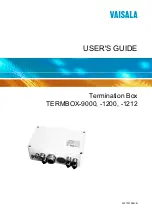
3
1.
The source device (Device A) sends an ICMP echo request to the destination device (Device C)
with the RR option blank.
2.
The intermediate device (Device B) adds the IP address of its outbound interface (1.1.2.1) to
the RR option of the ICMP echo request, and forwards the packet.
3.
Upon receiving the request, the destination device copies the RR option in the request and
adds the IP address of its outbound interface (1.1.2.2) to the RR option. Then the destination
device sends an ICMP echo reply.
4.
The intermediate device adds the IP address of its outbound interface (1.1.1.2) to the RR option
in the ICMP echo reply, and then forwards the reply.
5.
Upon receiving the reply, the source device adds the IP address of its inbound interface (1.1.1.1)
to the RR option. The detailed information of routes from Device A to Device C is formatted as:
1.1.1.1 <-> {1.1.1.2; 1.1.2.1} <-> 1.1.2.2.
Tracert
Tracert (also called Traceroute) enables retrieval of the IP addresses of Layer 3 devices in the path
to a destination. In the event of network failure, use tracert to test network connectivity and identify
failed nodes.
Figure 2 Tracert operation
Tracert uses received ICMP error messages to get the IP addresses of devices. Tracert works as
shown in
1.
The source device sends a UDP packet with a TTL value of 1 to the destination device. The
destination UDP port is not used by any application on the destination device.
2.
The first hop (Device B, the first Layer 3 device that receives the packet) responds by sending a
TTL-expired ICMP error message to the source, with its IP address (1.1.1.2) encapsulated. This
way, the source device can get the address of the first Layer 3 device (1.1.1.2).
3.
The source device sends a packet with a TTL value of 2 to the destination device.
4.
The second hop (Device C) responds with a TTL-expired ICMP error message, which gives the
source device the address of the second Layer 3 device (1.1.2.2).
5.
This process continues until a packet sent by the source device reaches the ultimate
destination device. Because no application uses the destination port specified in the packet, the
destination device responds with a port-unreachable ICMP message to the source device, with
its IP address encapsulated. This way, the source device gets the IP address of the destination
device (1.1.3.2).
6.
The source device determines that:
The packet has reached the destination device after receiving the port-unreachable ICMP
message.
Device A
Device B
Device D
Device C
1.1.1.1/24
1.1.1.2/24
Hop Lmit=1
TTL exceeded
1.1.2.1/24
1.1.3.1/24
1.1.2.2/24
1.1.3.2/24
Hop Lmit=2
TTL exceeded
UDP port unreachable
Hop Lmit=n















































